After four years, joy in Utqiaġvik at the messenger feast's return
A dispatch from America's northernmost community, where hundreds gathered for a traditional Iñupiaq festival of dancing, gift-giving and connection.
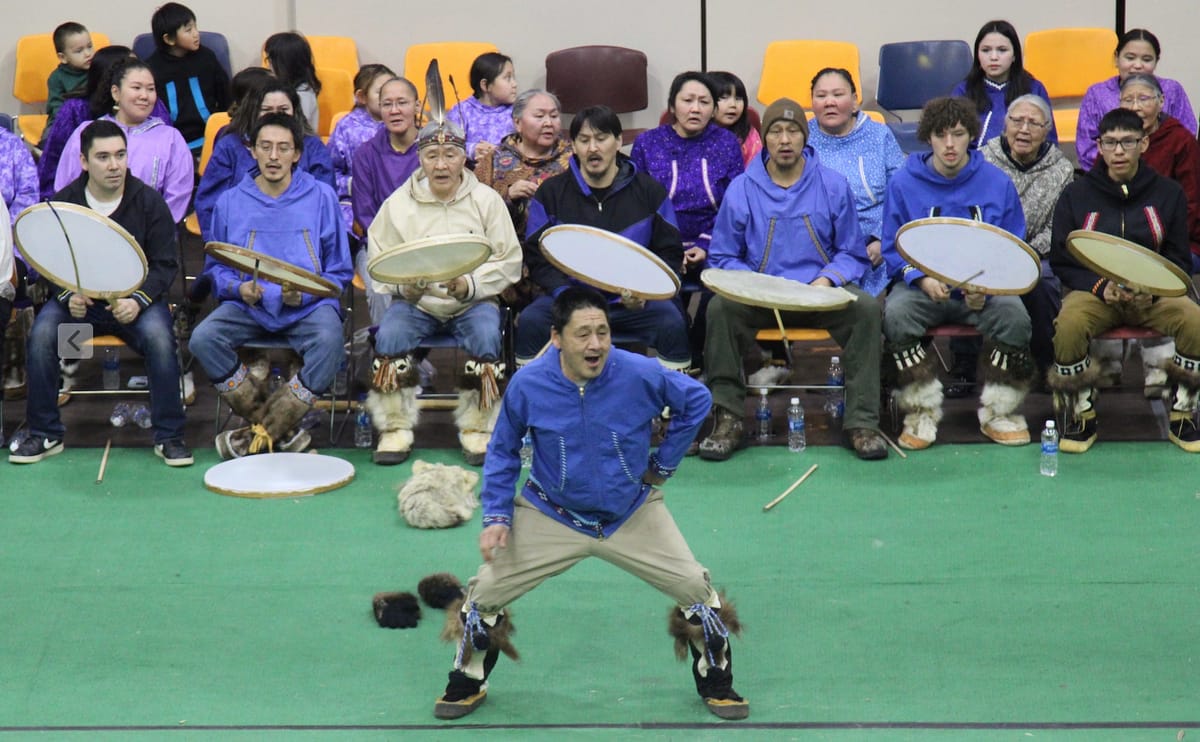
UTQIAĠVIK — It had been four years since the last maġlak at Kivgiq. When his time finally came Saturday, Jimmy Oyagak couldn’t wait.
As an Iñupiaq dance group from the North Slope village of Wainwright drummed, he stood on the floor in the high school gymnasium here before a crowd of hundreds, shaking a whaling harpoon and a whaling gun bomb above his head.
The weapons, plus a bright orange float on the floor, were ceremonial gifts for Oyagak’s first cousin, Cortez Olemaun, a whaling captain in this hub town on the edge of the Arctic Ocean.
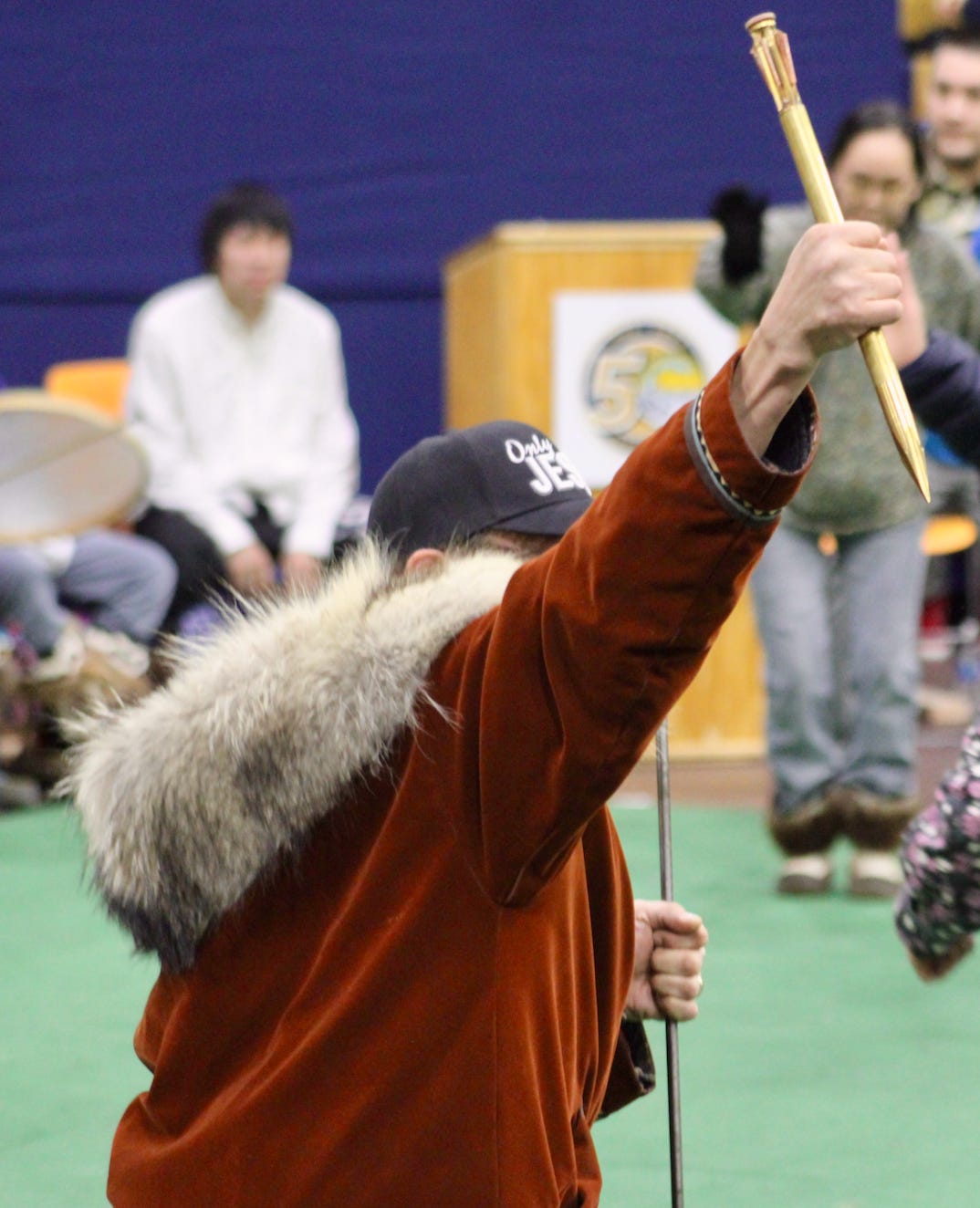
For Oyagak, the act of maġlak, or gift dancing, was a high point of Kivgiq — a traditional Iñupiaq festival that took place last week.
“It felt really, really great,” Oyagak said afterward. “I’m proud to be Iñupiaq.”
Kivgiq, pronounced kiv-yook, is the “messenger feast,” an ancient tradition in which Iñupiaq settlements sent out runners with invitations to neighboring communities. The ensuing events functioned as both celebrations of successful harvests and convenings for gift-giving, information sharing and bonding.
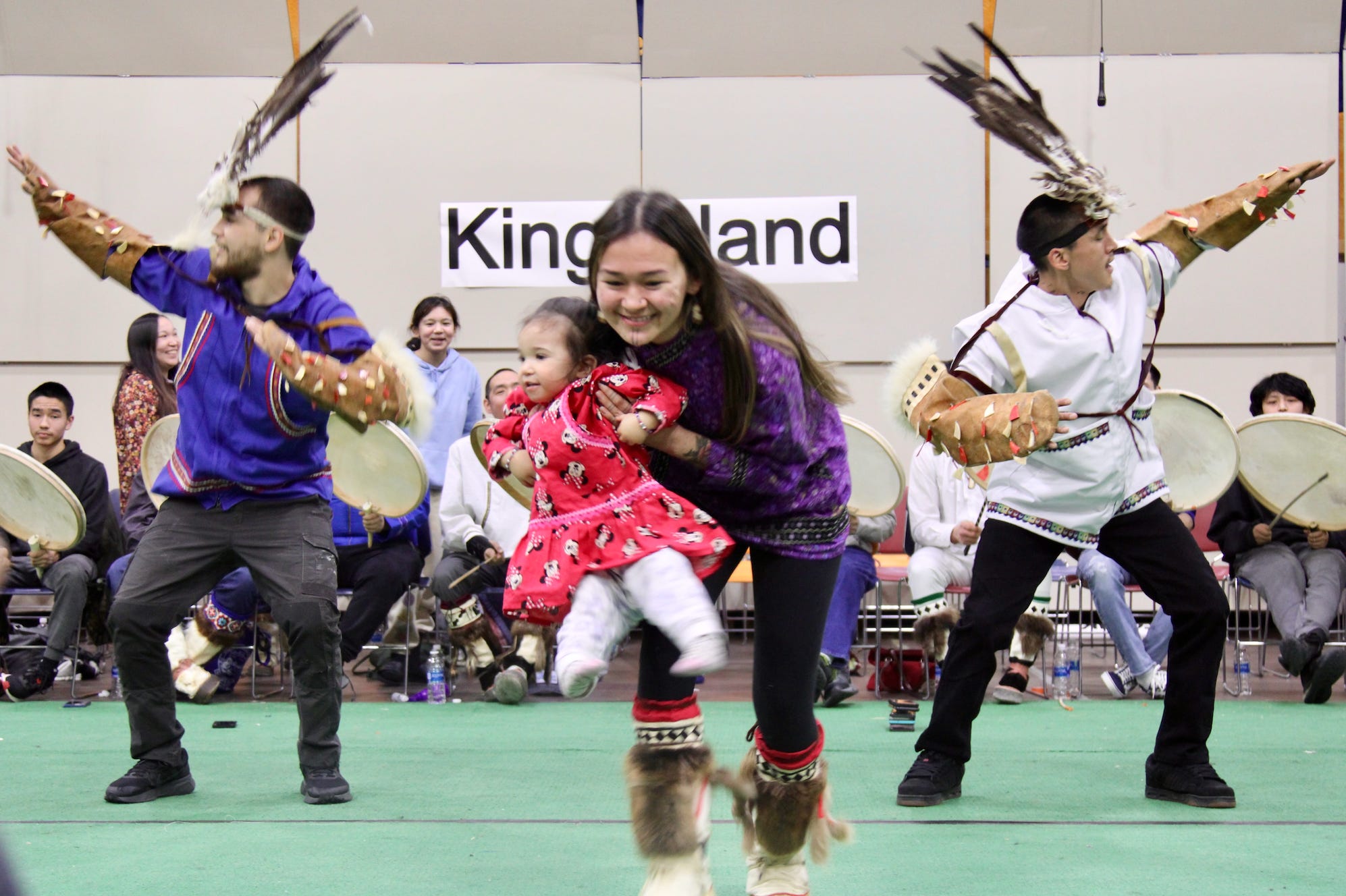
Kivgiq is generally held every two years, with dance groups from an array of Iñupiaq and Inuit villages gathering in Utqiaġvik. But there hasn’t been one since 2019, before the coronavirus pandemic.
The North Slope Borough started planning an event last year, but it had to be canceled amid one of the waves of the virus — which may have been a kind of blessing, some of this year’s participants said.
“We would have had to mask, we would have had to space people out. It wouldn’t have been the same event,” said Jack Frantz, the event’s lead organizer and an advisor to North Slope Borough Mayor Harry Brower.
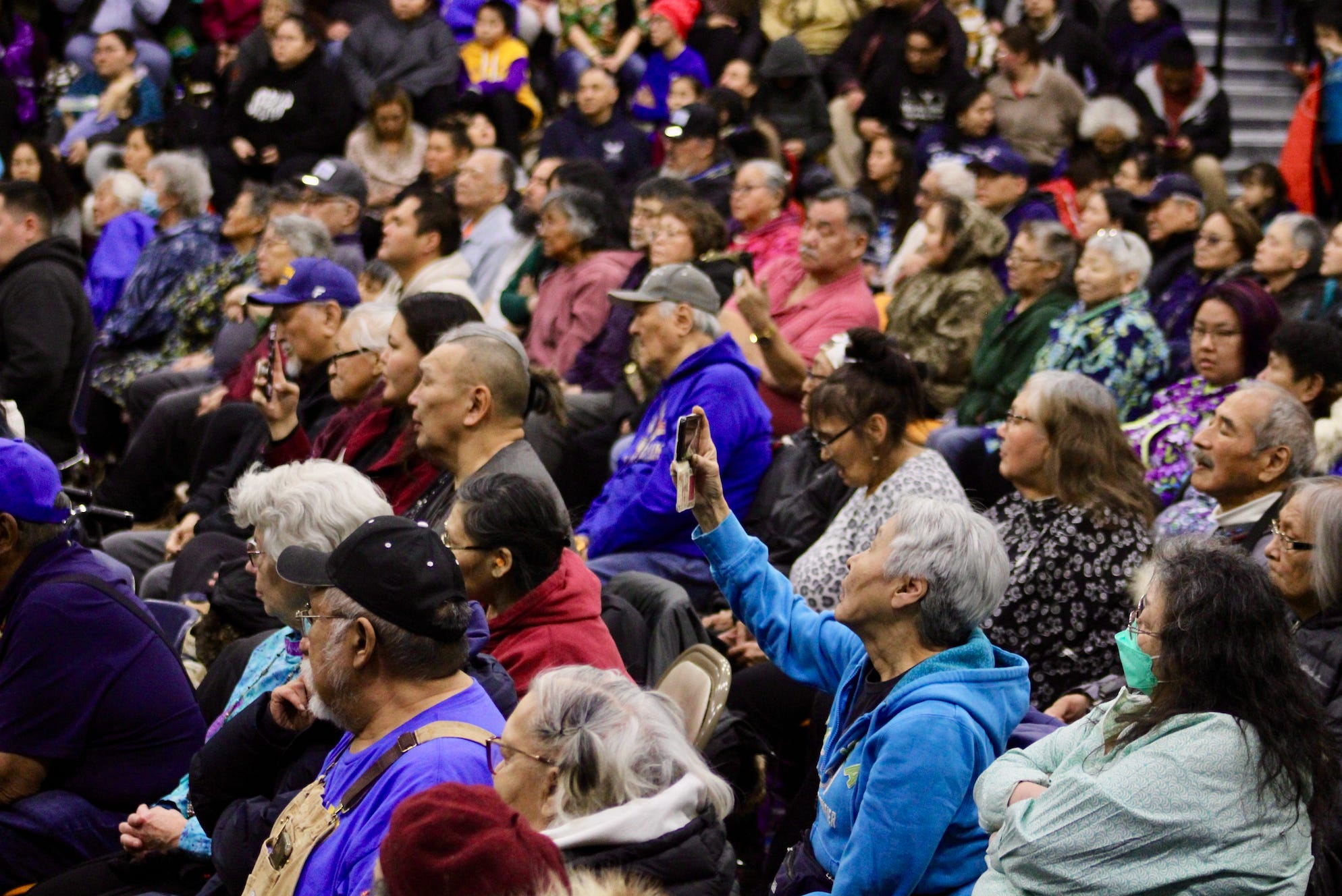
This year’s Kivgiq packed hundreds of people into chairs and bleachers at Utqiaġvik’s high school for meals, speeches and cultural celebrations.
Drumming, singing and dancing are at Kivgiq’s core, with some 30 hours of performances over three packed days.
The songs and dances are diverse and dynamic; they tell stories, evoke emotions and actions and honor individuals. There are dances to celebrate the new year. Tivsisaaq is funny dancing; some of this year’s included platinum blond wigs and a Grinch Who Stole Christmas mask.
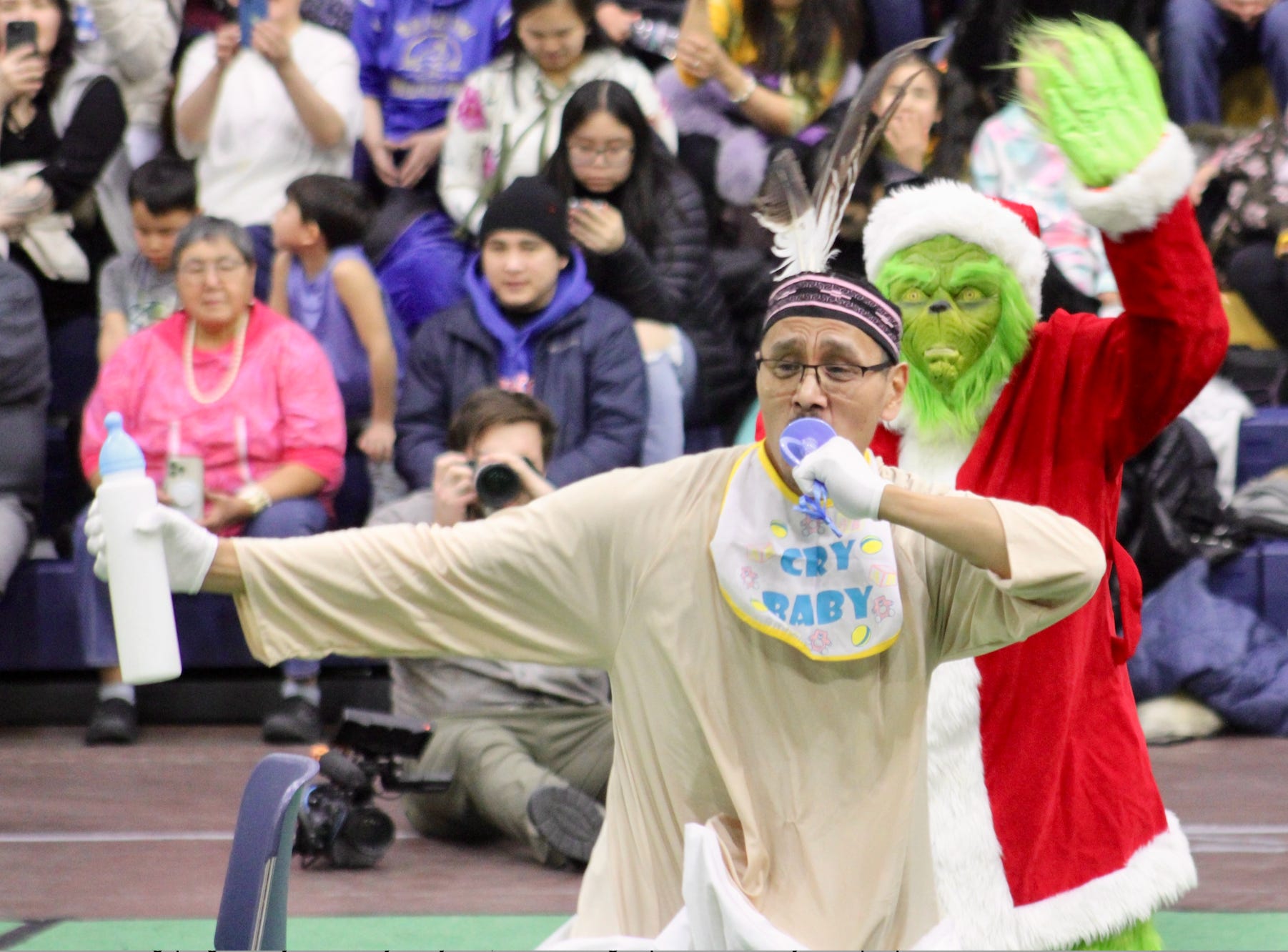
One man proposed to his partner in front of the crowd, then they danced together.
“When they composed songs, it was what they did, what they encountered, how successful they were,” said Sollie Hugo, 64, the spiritual leader of the dance group from the village of Anaktuvuk Pass. “In a sense, your drum is your heart.”
Almost everyone gets in on the action at Kivgiq. Over the past few days, Utqiaġvik received a succession of honored guests, nearly all of whom were pulled onto the gymnasium’s green dancing mat.
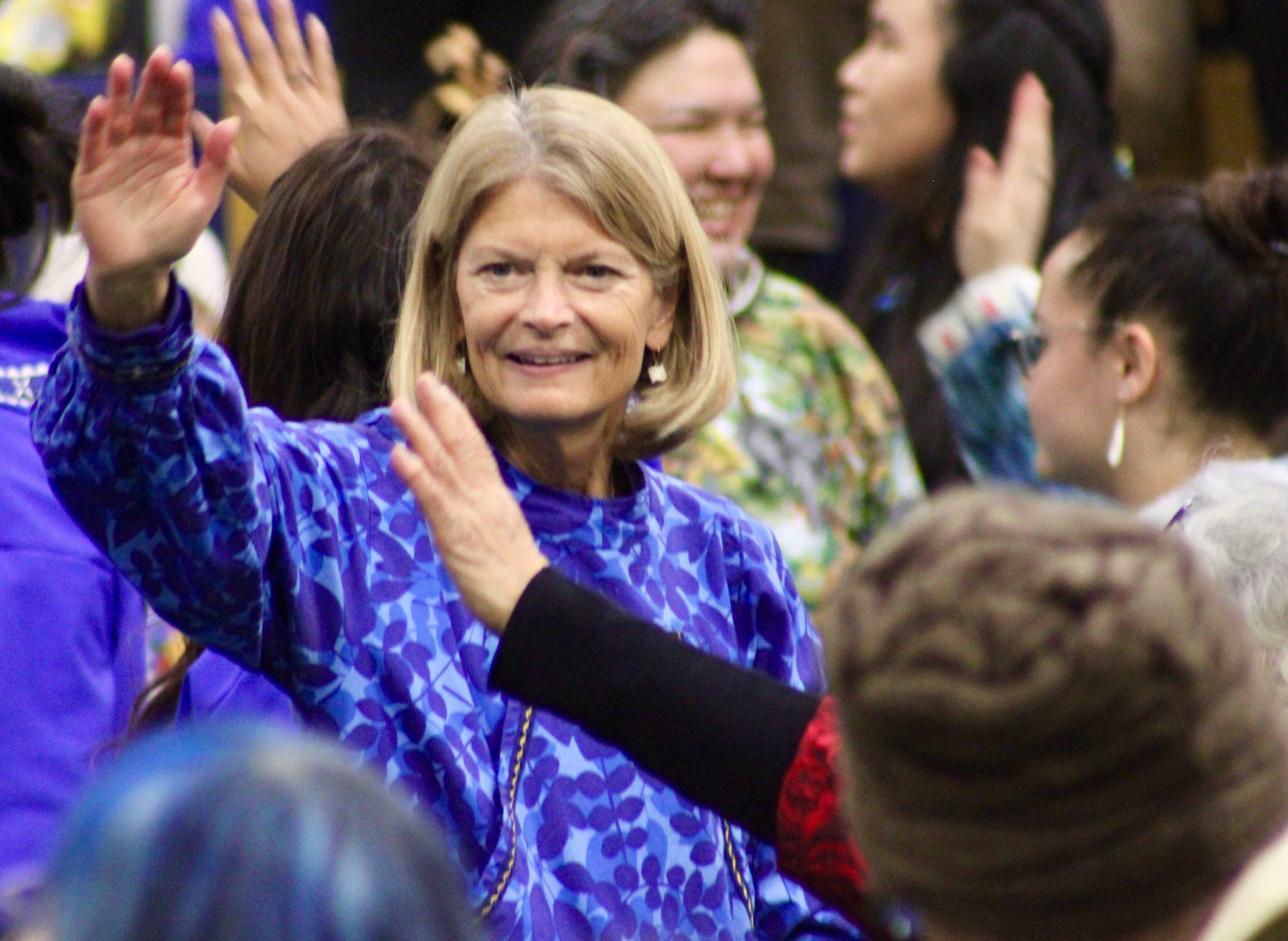
U.S. Sen. Lisa Murkowski, a day removed from a conference in Norway, spent a good portion of Saturday evening dancing and shooting selfies with young Iñupiaq women. Adam Crum, the state revenue commissioner, came to Utqiaġvik for a business meeting and, on Thursday, found himself bobbing to the beat of the drums in front of the crowd.
Nancy Dahlstrom, Alaska’s lieutenant governor, flew up with her husband for Friday night and had such a good time she decided to stay for Saturday night, too.
“Isn’t this awesome?” she said. “I cannot even describe the feeling in this room, just the love people have for each other.”
When Dahlstrom was asked to dance, she experienced what seems to be the standard emotional arc for first-time Kivgiq participants — initial performance anxiety quickly giving way to euphoria.
“At first, I felt a little bit silly. And then I thought, ‘I’m just going to go with it,’” she said. “I felt like I belonged.”
Kivgiq now feels like a staple for the North Slope’s Iñupiaq population. But it actually didn’t exist for much of the past century, as the region grappled with the impacts of colonization.
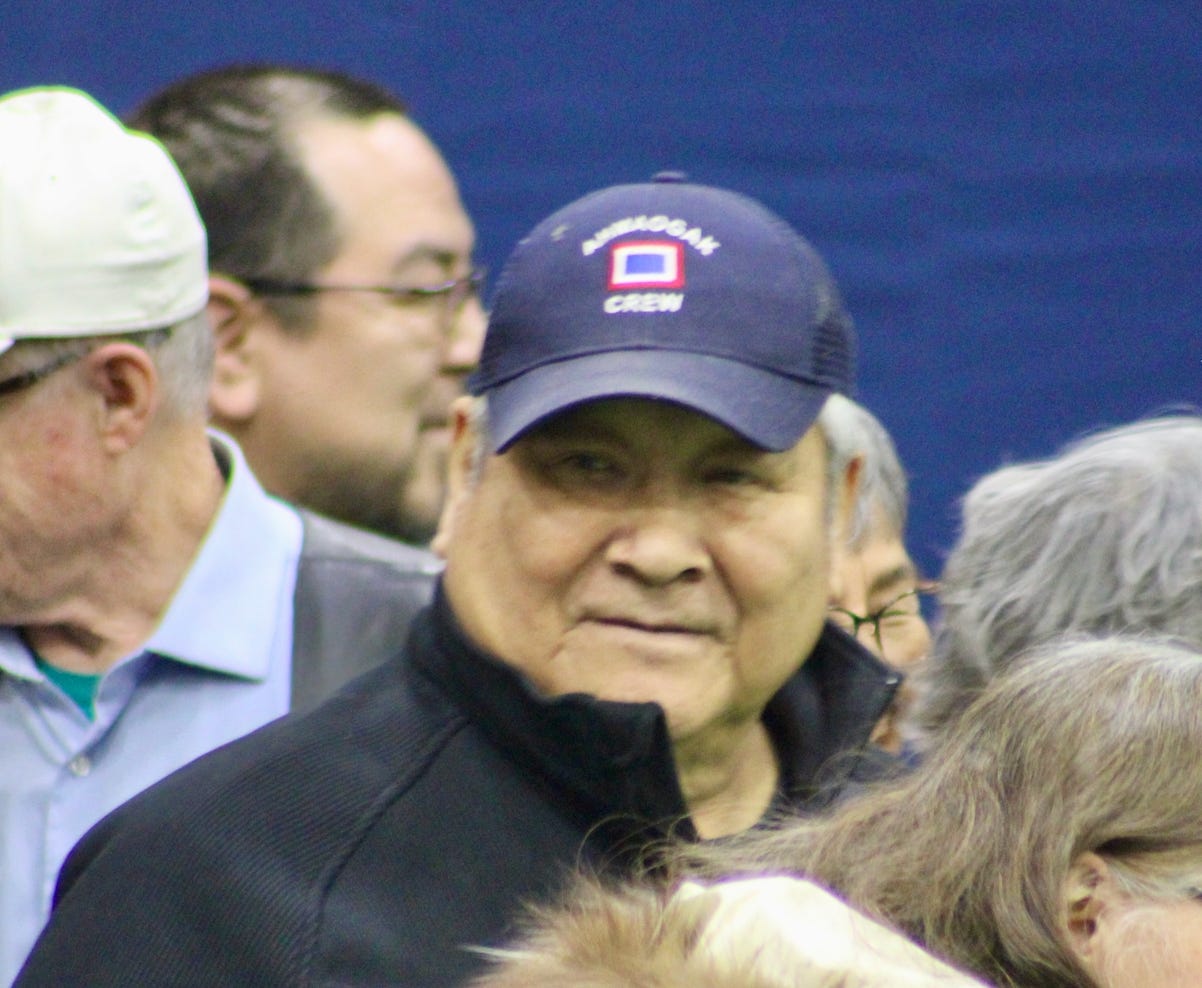
“Change in the culture, loss of language, loss of tradition and most of all, loss of our Iñupiaq values,” said George Ahmaogak, a former borough mayor. “People were starting to get out of hand. We needed to bring those values back.”
In the late 1980s, Ahmaogak, as mayor, decided to revive Kivgiq, which was last celebrated in the early 1900s. He sent an aide to the region's villages to interview elders and make sure the event was reconstructed correctly.
The first one, in 1988, drew 2,000 participants.
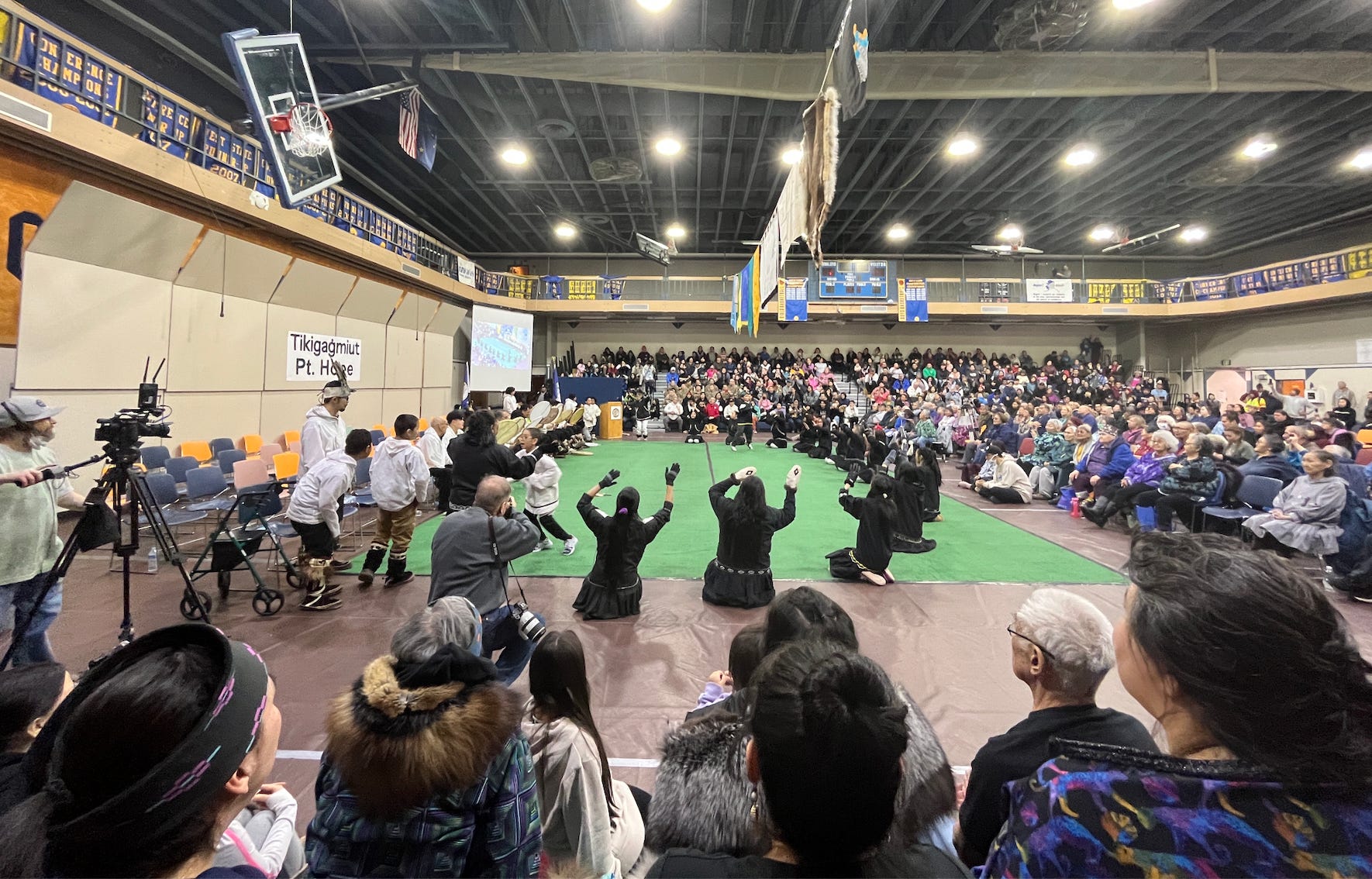
“It was a vision of honoring the past, to reinforce our culture, our traditions,” Ahmaogak said Saturday night, adding that he’s “humbled” by how Kivgiq has been carried on.
The modern day event is now, in Ahmaogak’s words, a “huge undertaking.”
The borough government — amply funded with taxes from oil companies that pump oil off traditional Iñupiaq lands on the North Slope — budgeted $500,000 for Kivgiq. Sponsors kicked in more.
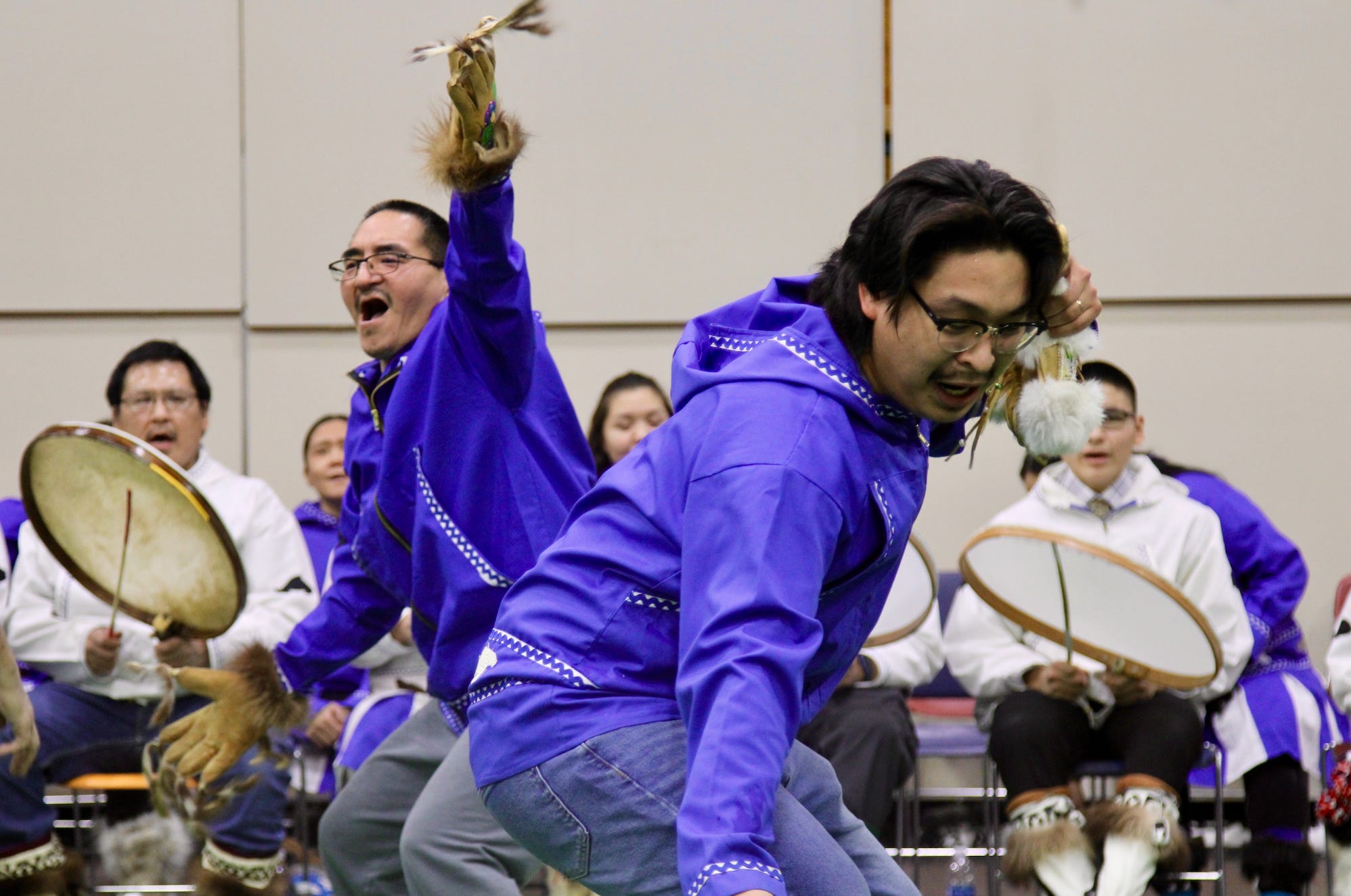
Much of the cash went toward just getting participants to Utqiaġvik.
Bush planes flew in dance groups from the North Slope’s seven villages, which sent dozens of participants apiece.
Others came from outside the region, including 16 people from Inuvik in Canada’s Northwest Territories. The group flew to Whitehorse, drove a full day to Fairbanks in rented trucks and finally got back on a plane to fly to Utqiaġvik.
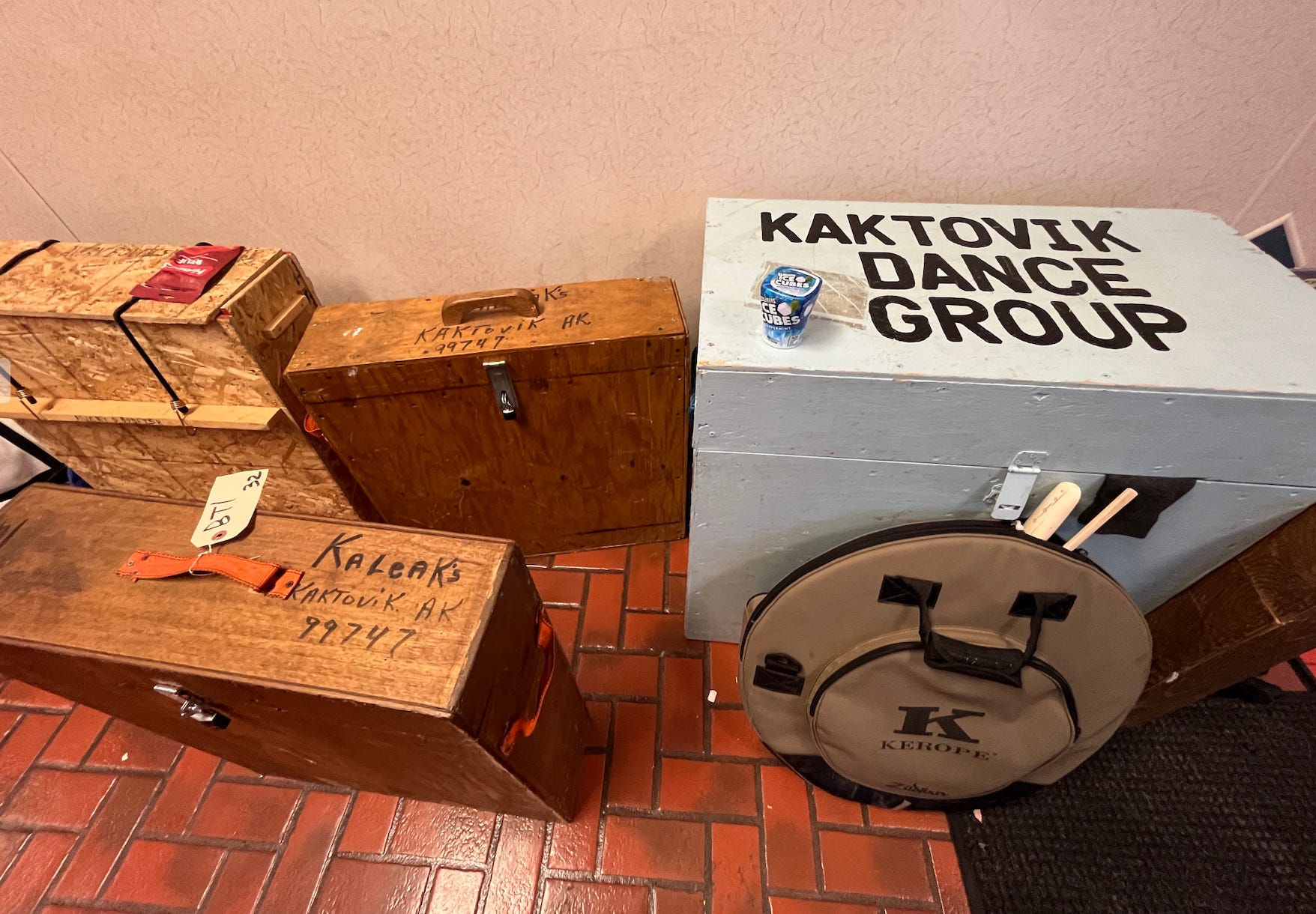
Visiting elders stayed in the few hotel rooms in town; for pretty much everyone else, the borough set up 300 cots wherever there was room. But many participants had friends or family around, and welcomed the chance to reconnect with cousins and other distant relatives.
“These communities know how to take care of themselves,” said Frantz, the organizer.
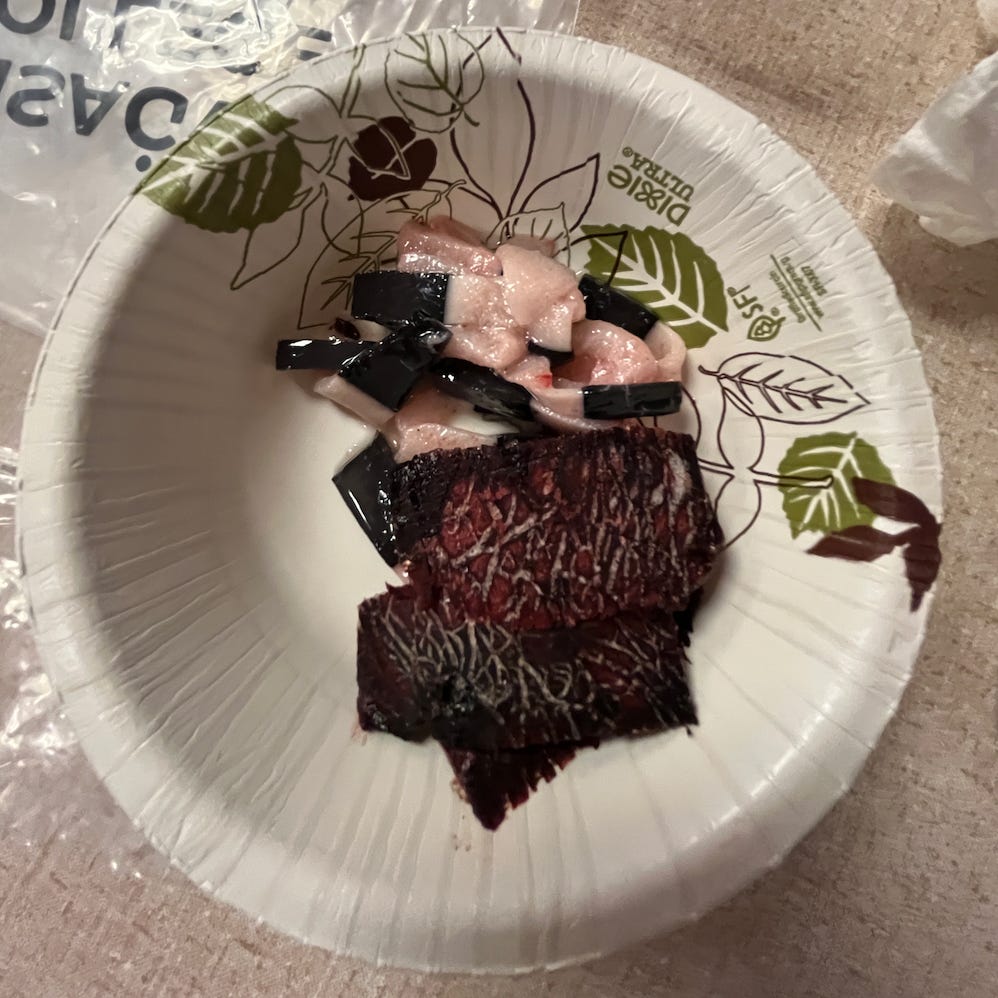
Visitors were served lunch and dinner each day, including traditional Iñupiaq foods: A steady stream of caribou soup and maktak flowed out of a side room at the high school. Frantz guessed that two or three bowhead whales were eaten over the course of the event.
The spirit of Kivgiq is inclusive, with children and even toddlers performing many dances.
“They’ll make mistakes, that’s okay. But we can say, ‘Okay, this is how we do it,’” said Hugo, the spiritual leader of the Anaktuvuk Pass group. “Watch, listen and learn. Those are the three most important things in Iñupiaq culture.”
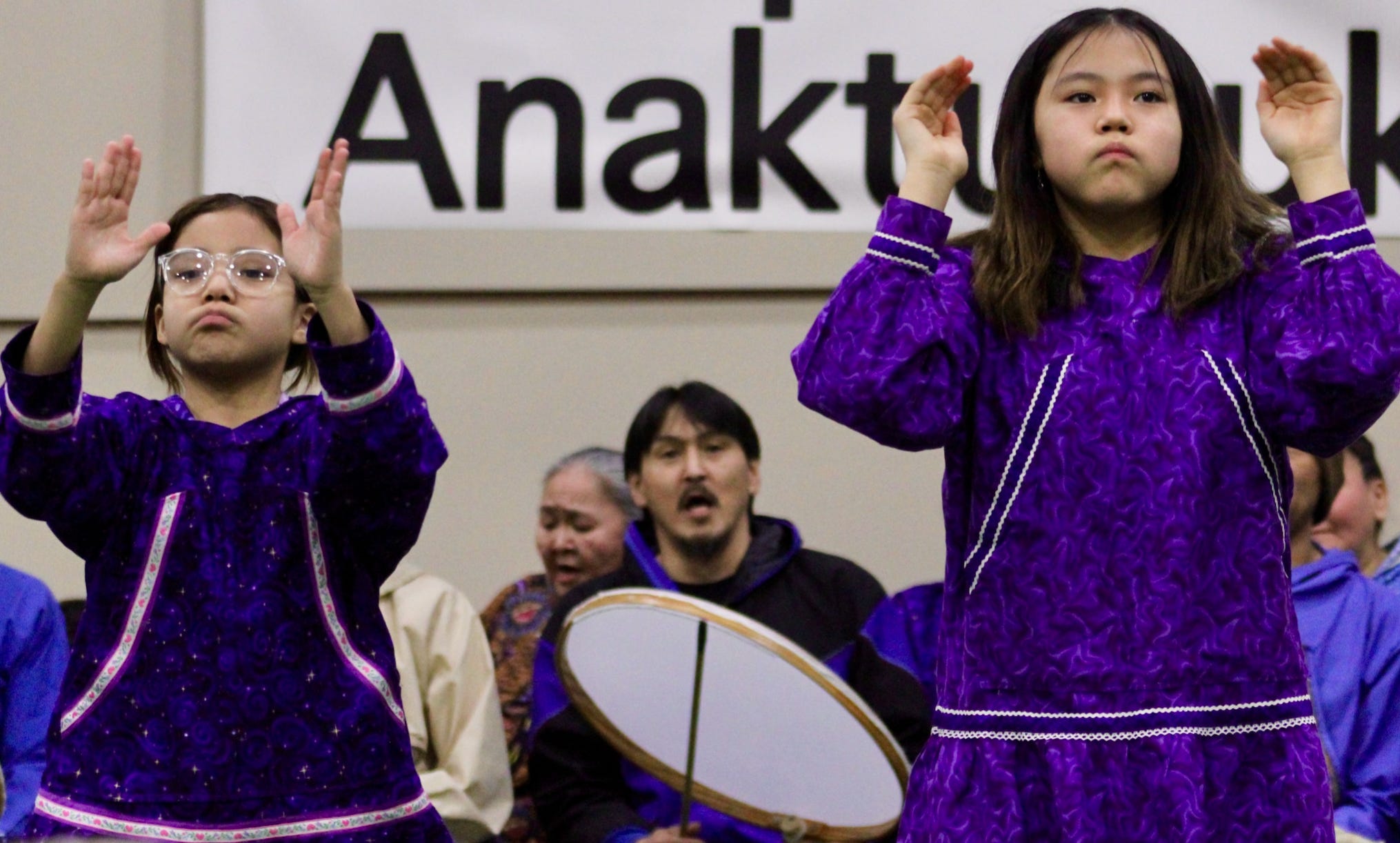
Many participants wore traditional clothing, like atikłuks, dancing gloves and even masks. But the flexible dress code also allowed for jeans, sneakers and hoodies.
“I’m a fan of the Packers,” explained Vernon Elavgak, after performing an impromptu dance in a hoodie advertising Green Bay’s professional football team.
The first dances began at 1 p.m. each day, with the last scheduled for 11:30 p.m. and stretching into the wee hours of the morning. Mingling went on well after: Josiah Patkotak, an emcee and Utqiaġvik’s representative in the state House, said he entertained guests one night until 4 a.m.
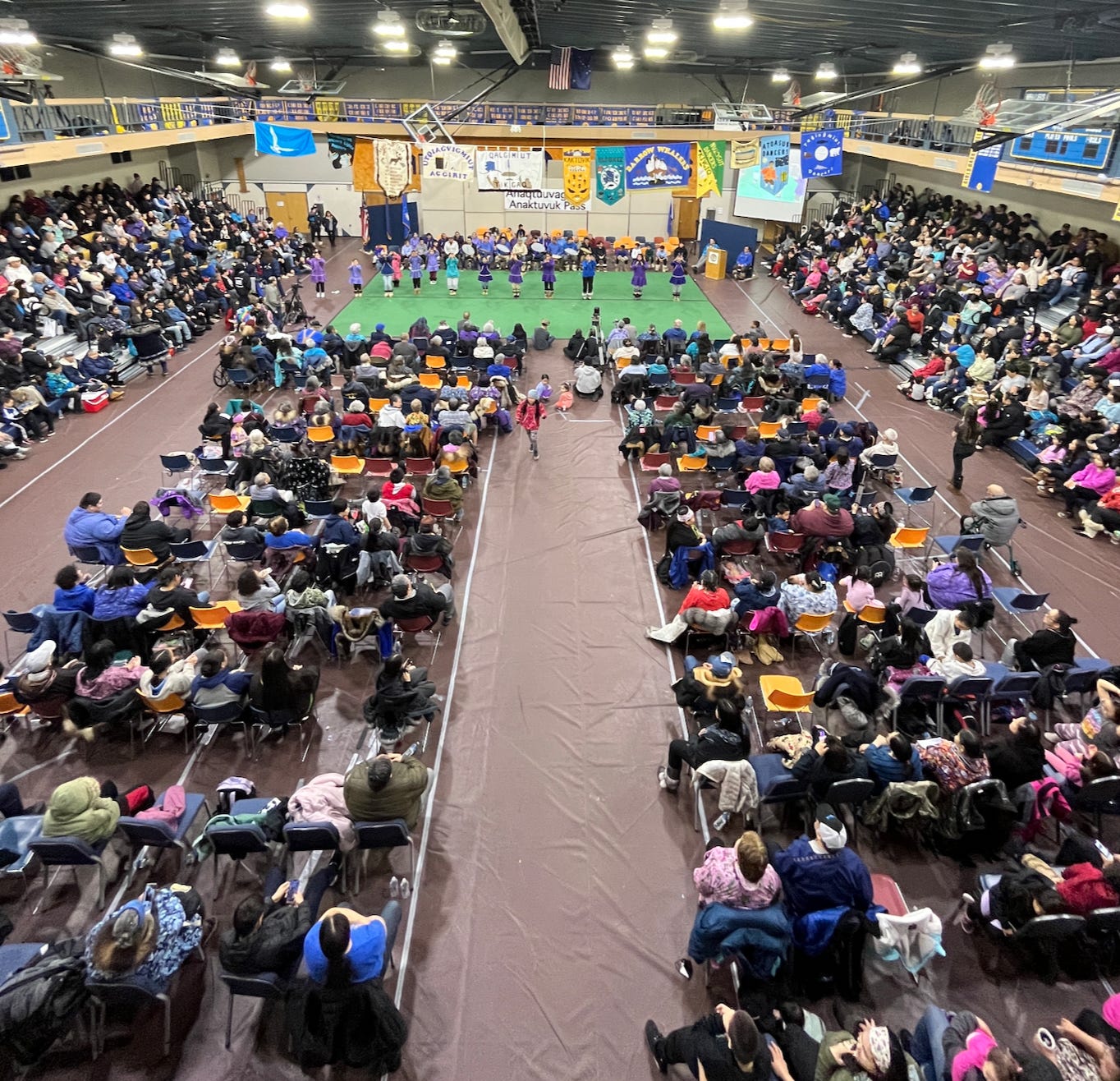
“This is healing, after being confined for four years,” said Scott Szmyd, another top aide to the borough mayor. “Our culture is gathering and embracing.”
Many people remained at the gymnasium for hours at a time, with only short breaks for meals and bathroom runs.
The energy there, participants said, was contagious.
“You watch people all day — you hear it. There’s groups that go on and sing and they perform and you feel it. It grabs your attention, and it just makes you get a rush,” said Joseph Ahmaogak, who leads Wainwright’s dance group. “That’s what we try to do.”



